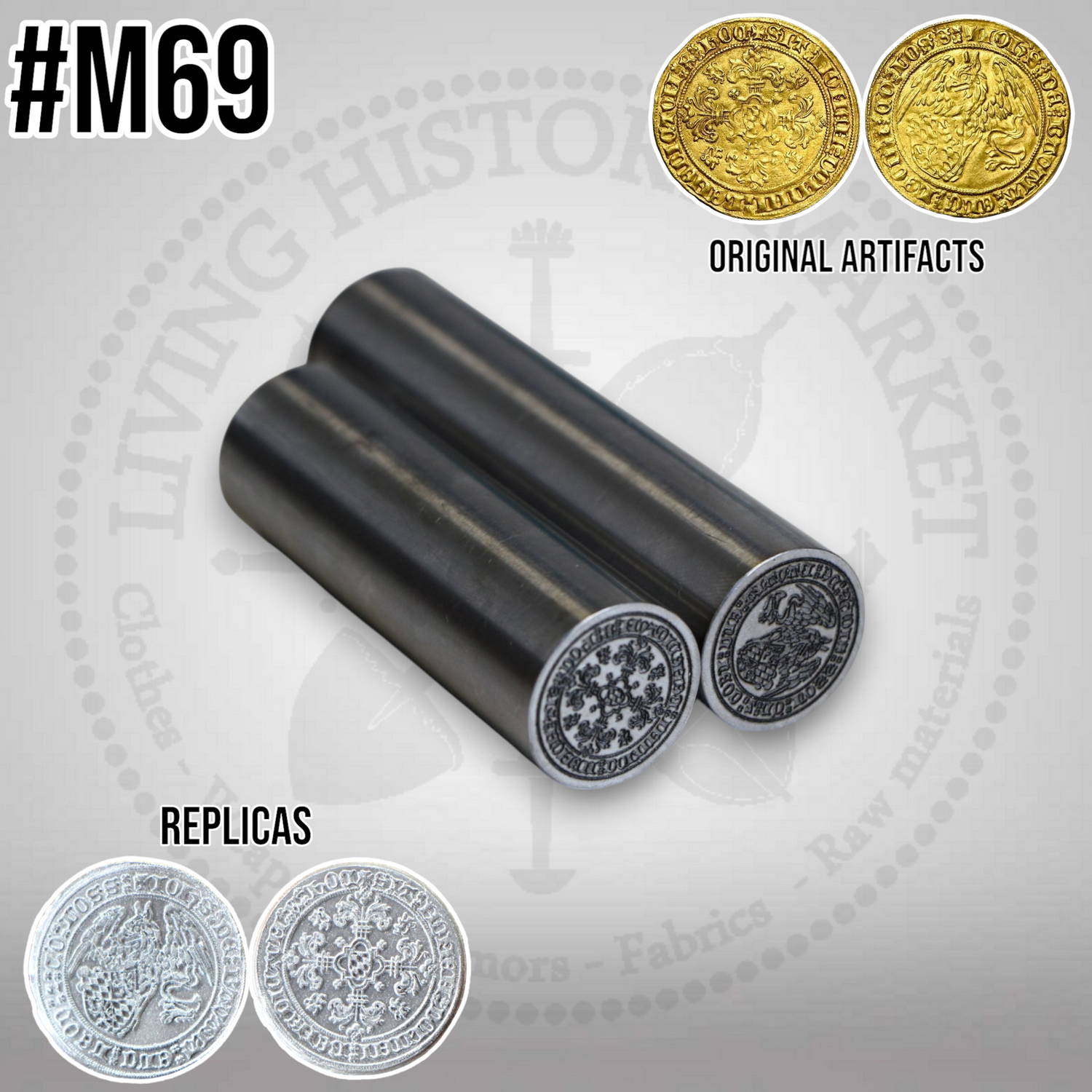Jean III from Bavaria "écu d'or" - 15th century / #M69
Technical features
- Coin dies set, allowing you to mint your historical coins yourself.
- Hardened steel bars, hardness 60-64 HRC. High resistance.
- A set consists of a bar 10cm long, and a bar 8cm long.
- Bars diameter: 25mm.
- Diameter of engraved patterns: 22mm.
- Deep engraving and perfectly crafted designs for optimal results.
- Manufactured in France, on order, and shipped worldwide within 2-4 weeks, from France!
You can purchase a guide to make striking your coins easier. Click here!
Historical informations
The life of John III of Bavaria is a true novel. He was the younger son of Albert of Bavaria, Count of Hainaut, Holland, and Zeeland, and the grandson of Emperor Louis of Bavaria. Barely 17 years old, he was chosen to succeed Arnould of Hornes in the bishopric of Liège and was enthroned with great pomp in July 1390. He then received, by papal dispensation, the order of subdiaconate, the only one ever conferred on him. From the beginning of his reign, he attracted the hostility of his subjects, anxious to maintain their privileges and customs (they were called the Haydroits). Moreover, the chosen one refused to take holy orders to become a bishop. After a few years of a troubled reign, he was forced to retire to Maastricht (1402) while the other cities chose Henry of Perwez, Lord of Hornes, as mambour. Encouraged by John of Bavaria's inaction, his opponents persecuted his supporters and even proclaimed his deposition in 1406. The mambour's son, Thierry of Perwez, was chosen as bishop, and his troops besieged Maastricht in the winter of 1407-1408. The House of Bavaria could not tolerate these humiliations: the chosen one was rescued by his brother, William IV of Hainaut, and his brother-in-law, John the Fearless. The decisive battle took place near Tongeren, on the Plain of Othée, in September 1408. The rebels were crushed, and eight thousand Liège citizens perished in the battle, including the mambour and his son. After his restoration, John of Bavaria ordered terrible reprisals that earned him the nickname John the Merciless. The widow of the mambour was even thrown into the Meuse. The elected official then governed the principality as absolute master until his brother, William IV of Hainaut, died in 1417 without a male heir. John of Bavaria then conceived the plan to seize the inheritance of his niece Jacqueline. He abdicated the bishopric of Liège and managed to have himself recognized as Count of Hainaut, Holland, Zeeland, and Friesland by Emperor Sigismund, whose niece, Elisabeth of Görlitz, widow of Antoine of Burgundy and indentured servant of the Duchy of Luxembourg, he married. He then came to an agreement with John IV of Brabant, the husband of Jacqueline of Bavaria, who, despite the opposition of his wife and the States of Brabant, ceded Holland, Zeeland and Friesland to him (1420). Jacqueline of Bavaria, who retained Hainaut, then separated from her husband and sought the alliance of the King of England by marrying his brother, the Duke of Gloucester. She then returned to the continent at the head of an English army to try to reconquer her inheritance (October 1423). John of Bavaria, who still held Holland, died in the meantime in Delft, without an heir (January 1424). His death did not end the conflict because Jacqueline was now at war with John IV of Brabant, who in turn claimed his states as her legitimate husband and even received the support of the Duke of Burgundy, Philip the Good, who did not want to see the House of England established in the Low Countries. The Brabant army invaded Holland and then attacked Hainaut while Jacqueline was abandoned to her fate by Humphrey of Gloucester, who had returned to England. She had no other recourse than to seek the protection of Philip the Good, her cousin and closest heir, who assumed the government of Holland and Zeeland with the title of ruwaart while John IV retained the administration of Hainaut until his death (1427). All the former estates of the House of Bavaria were then under the authority of Philip the Good, who forced Jacqueline to abdicate in his favor in 1433.
